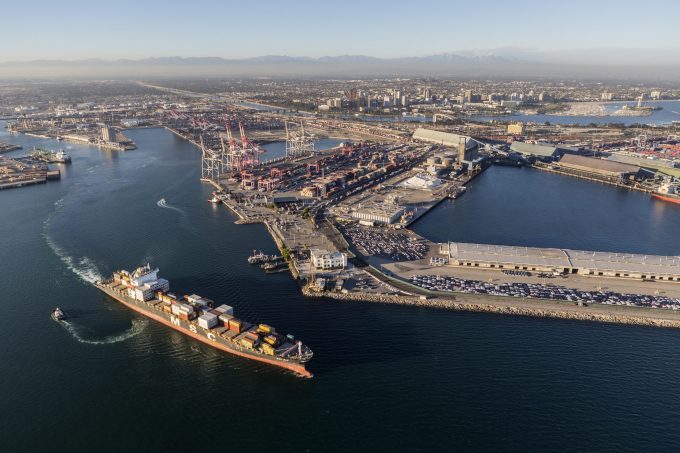Trade growth getting stronger, but ocean freight rates stay flattish
While rates on the transpacific continued to soften, and Asia-Europe trades showed marginal gains, the ...

Container spot rates on the transpacific edged down slightly again this week, however they remain significantly higher than a year ago.
It follows that ocean carriers will feel confident of securing respectable annual contract rate increases from their shipper customers as the liner industry assembles for next week’s S&P Global TPM24 conference in Long Beach, California.
Xeneta’s XSI Asia-US west coast average rate declined by 3%, to $4,619 per 40ft, compared with $1,316 in the same week of 2023. Moreover, the XSI reading was just $1,593 per 40ft in December, before the impact of the Red Sea crisis on the spot markets.
On the US east coast, where trade from Asia has been directly affected by a double-whammy of Panama Canal restrictions and diversions around the Cape of Good Hope, Drewry’s WCI Asia to US east coast spot closed the week on an average of $5,820 per 40ft, 3% down on the week, but 110% higher year on year.
Meanwhile, Xeneta’s long-term rate index saw its biggest increase in 18 months, partly driven by carriers declaring force majeure on current contracts, enabling them to surcharge shippers for Red Sea diversions.
The rate benchmarking and market analytics firm’s VP of customer success, Michael Braun, said he was “not expecting fast negotiations” at this year’s TPM, and there would likely be a stand-off between carriers and BCOs.
He explained: “Importers into the US west coast will say that this is a problem between Asia and Europe and we’re not willing to pay more. Carriers, on the other hand, will say this is a global problem because we have to redeploy capacity from the transpacific onto other trades which are directly affected by the Red Sea diversions.”
He cautioned that if transpacific shippers fixed long-term they could be left overpaying when the Red Sea disruption ended.
“Clearly there needs to be some flexibility built into new agreements, otherwise it is a big risk for both sides. It could be done through agreement to review after three months,” suggested Mr Braun.
On the Asia-Europe tradelane, the most impacted by longer transits around the African coast, spot rates are coming back down slowly, with for example the XSI Asia-North Europe average rate this week ticking down by another 1%, to $4,262 per 40ft, which compares with $1,316 12 months ago.
And for the Asia-Mediterranean trade, which most carriers are serving via a hub & spoke relay operation, spot rates are falling quite rapidly, with the WCI average spot down 6% on the week, to $4,757 per 40ft.
This week’s Ningbo Containerized Freight Index (NCFI) commentary reported that many factories in China had still not resumed full production following February’s Chinese New Year holiday and that Asia-North Europe and Asia-Mediterranean carriers were being obliged to discount rates due to poor booking levels.
Indeed, one UK-based shipper contact told The Loadstar this morning that volumes were “massively down”, and that he was “unsure how long the lines will be able to maintain these rate levels”.
And he added: “I fear another crash, and that does nobody any good.”
Another shipper contact told The Loadstar carriers on the route “have started to consolidate into all-in pricing once more”, but nevertheless he said the final rate was still above pre-Red Sea crisis levels.
Finally, on the transatlantic, the North Europe-US east coast XSI spot slipped by 2%, to an average of $2,091 per 40ft, but nevertheless remains 46% up month on month, as carriers take out capacity to deploy on more lucrative routes.
Comment on this article